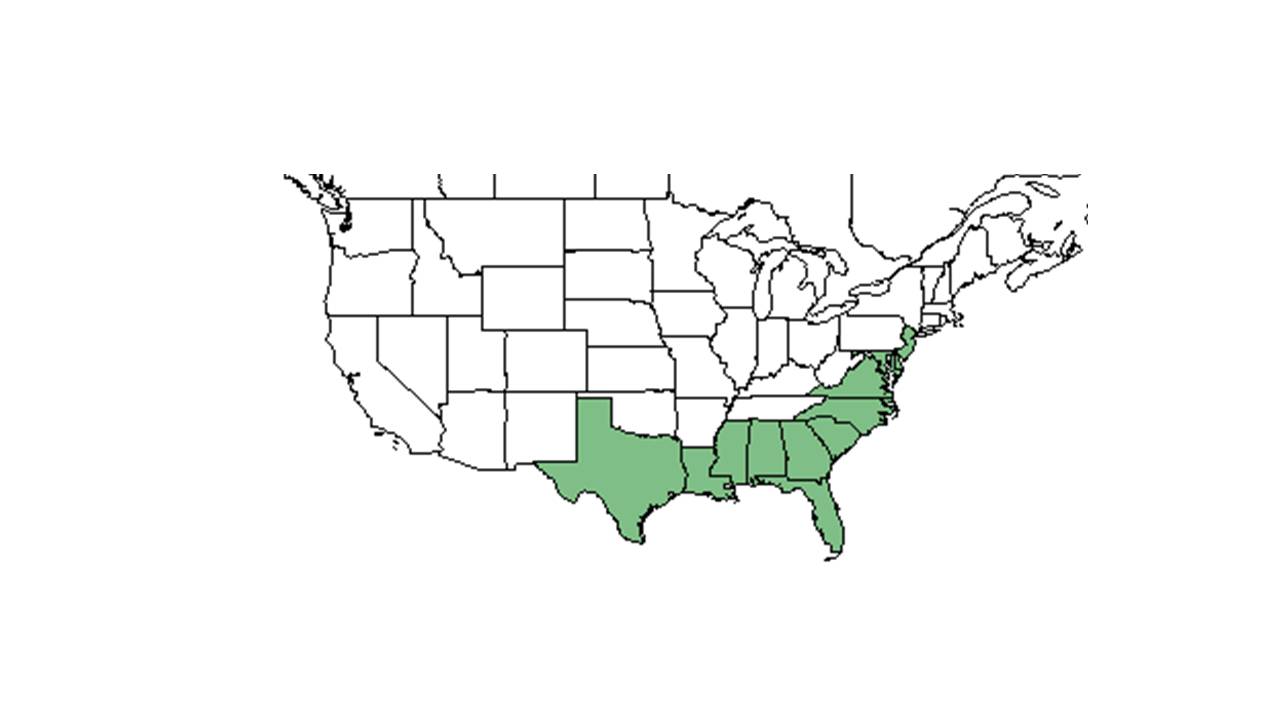Difference between revisions of "Solidago stricta"
KatieMccoy (talk | contribs) |
KatieMccoy (talk | contribs) |
||
| Line 27: | Line 27: | ||
==Ecology== | ==Ecology== | ||
===Habitat=== <!--Natural communities, human disturbed habitats, topography, hydrology, soils, light, fire regime requirements for removal of competition, etc.--> | ===Habitat=== <!--Natural communities, human disturbed habitats, topography, hydrology, soils, light, fire regime requirements for removal of competition, etc.--> | ||
| − | It tends to be more common in mesic and wet areas than dry areas | + | In the Coastal Plain in Florida and Georgia, ''S. stricta'' can be found in open woodlands, pine flatwoods, pine-palmetto flatwoods, ditches, lagoon edges, banks of brackish marshes, high pinelands, longleaf pine-turkey oak ridges, salt flats and borders of mangrove swamps, recently burned longleaf pine-wiregrass savannas, seepage bogs, banks of ephemeral ponds, tidal marshes, sandhills, and coastal dunes (FSU Herbarium). It can also be found in lawns, clobbered slash pines, recently planted slash pine plantations, roadsides, vacant lots, powerline corridors, and logged over hillside bogs. It tends to be more common in mesic and wet areas than dry areas (Walker and Peet 1983). Substrates include loamy sand, peaty sand, alluvial sands, limerock, sand, and sandy peat (FSU Herbarium). |
| + | |||
| + | Associated species include ''Vignal luteola, Liatris, Pityopsis, Aristida stricta, Pinus palustris, Andropogon, Solidago sempervirens, Senecio'' and ''Euthamia'' (FSU Herbarium). | ||
| + | |||
===Phenology=== <!--Timing off flowering, fruiting, seed dispersal, and environmental triggers. Cite PanFlora website if appropriate: http://www.gilnelson.com/PanFlora/ --> | ===Phenology=== <!--Timing off flowering, fruiting, seed dispersal, and environmental triggers. Cite PanFlora website if appropriate: http://www.gilnelson.com/PanFlora/ --> | ||
Revision as of 13:15, 12 October 2015
| Solidago stricta | |
|---|---|
Error creating thumbnail: Unable to save thumbnail to destination
| |
| Photo taken by Gil Nelson | |
| Scientific classification | |
| Kingdom: | Plantae |
| Division: | Magnoliophyta – Flowering plants |
| Class: | Magnoliopsida – Dicotyledons |
| Order: | Asterales |
| Family: | Asteraceae ⁄ Compositae |
| Genus: | Solidago |
| Species: | S. stricta |
| Binomial name | |
| Solidago stricta Aiton | |

| |
| Natural range of Solidago stricta from USDA NRCS Plants Database. | |
Common name: wand goldenrod
Contents
Taxonomic notes
Description
A description of Solidago stricta is provided in The Flora of North America.
Distribution
Ecology
Habitat
In the Coastal Plain in Florida and Georgia, S. stricta can be found in open woodlands, pine flatwoods, pine-palmetto flatwoods, ditches, lagoon edges, banks of brackish marshes, high pinelands, longleaf pine-turkey oak ridges, salt flats and borders of mangrove swamps, recently burned longleaf pine-wiregrass savannas, seepage bogs, banks of ephemeral ponds, tidal marshes, sandhills, and coastal dunes (FSU Herbarium). It can also be found in lawns, clobbered slash pines, recently planted slash pine plantations, roadsides, vacant lots, powerline corridors, and logged over hillside bogs. It tends to be more common in mesic and wet areas than dry areas (Walker and Peet 1983). Substrates include loamy sand, peaty sand, alluvial sands, limerock, sand, and sandy peat (FSU Herbarium).
Associated species include Vignal luteola, Liatris, Pityopsis, Aristida stricta, Pinus palustris, Andropogon, Solidago sempervirens, Senecio and Euthamia (FSU Herbarium).
Phenology
Seed dispersal
Seed bank and germination
Fire ecology
Pollination
Use by animals
Diseases and parasites
Conservation and Management
Cultivation and restoration
Photo Gallery
References and notes
- Walker, J. and R. K. Peet. 1983. Composition and species diversity of pine-wiregrass savannas of the Green Swamp, North Carolina. Vegetatio 55:163-179.